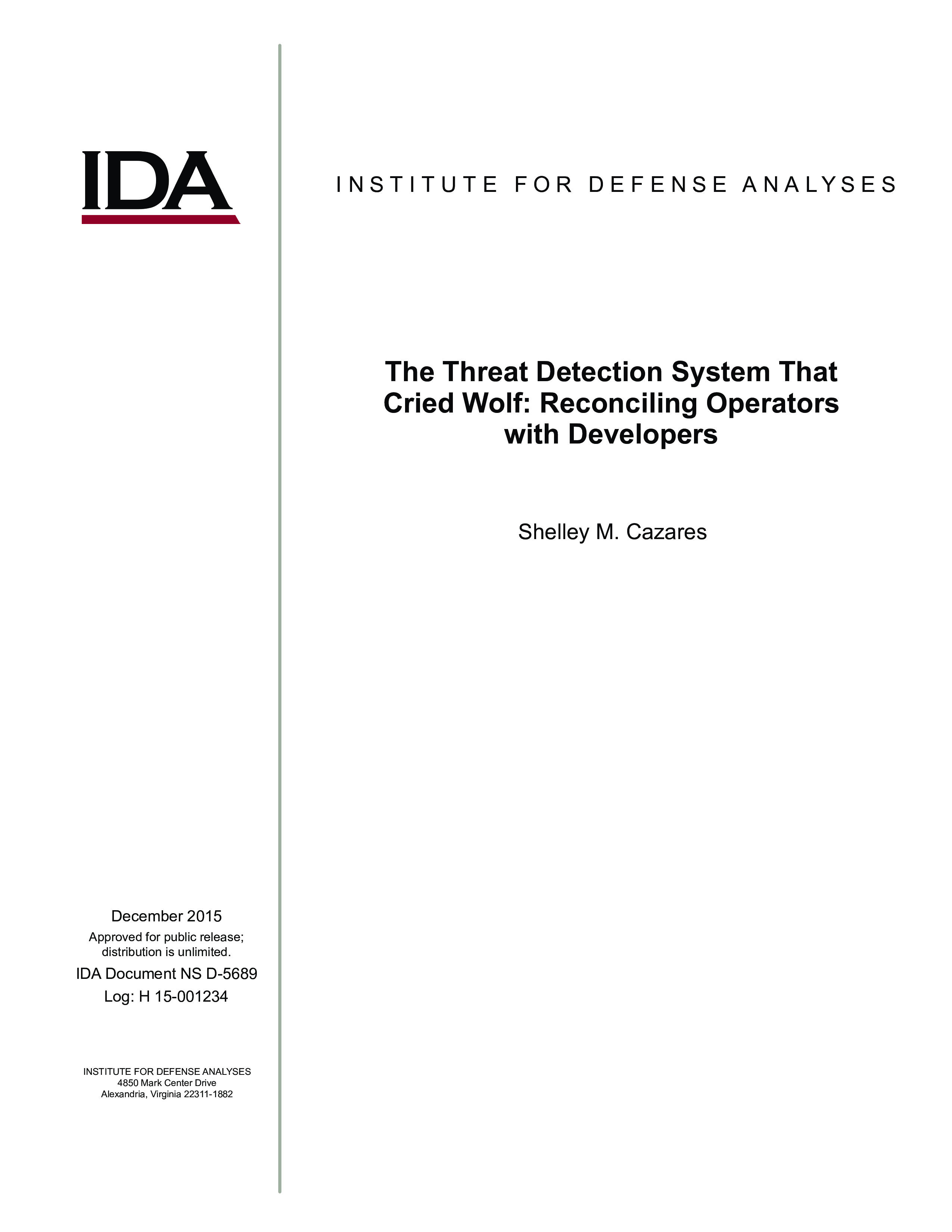The Threat Detection System That Cried Wolf: Reconciling Operators with Developers
December, 2015
IDA document: D-5689
FFRDC: Systems and Analyses Center
Type: Documents
Division: Science and Technology Division,
Science, Systems and Sustainment Division
Authors:
IDA document: D-5689
FFRDC: Systems and Analyses Center
Type: Documents
Division: Science and Technology Division
Authors:
Authors
Cazares, Shelley M.
See more authors

